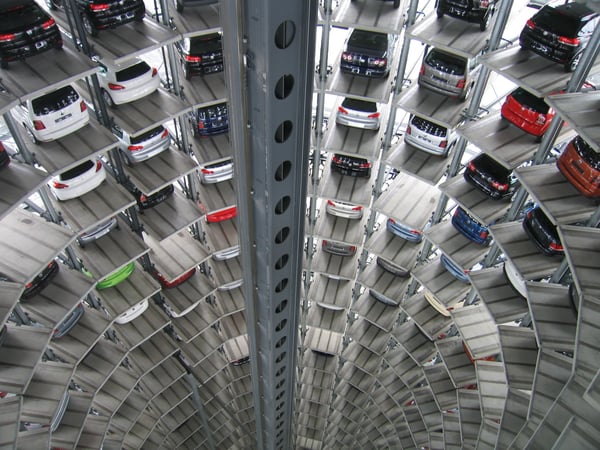Any manufacturer in any industry is always looking for ways to engage with customers and showcase their products. This can be seen with the rise of virtual vehicle showrooms that have appeared from multiple manufacturers. As technology continues to evolve, the way people shop for cars, boats, and recreational vehicles is also changing. With the rise of virtual reality (VR), creating a VR vehicle showroom can be a game-changer for automotive, watercraft, and other manufacturers. In this blog post, we'll explore the benefits of creating a VR vehicle showroom.
Showcase Vehicles Without the Limitations of Space
A physical showroom can only be so big at a dealership and the number of vehicles that can be displayed is limited. This is not the case with a virtual reality vehicle showroom. Since there are no physical limitations, you can show off every available vehicle in your catalog. AS well with vehicles of any nature they are larger than average projects. This means that you have to be extra conservative with your space to fit the products that you want to sell.

Along with being able to show such a wide variety of products, when you use proper visualization tools, you can allow customers to explore your products just as thoroughly as they could in person. You can have 360-degree product views and simple animations to show off all the different features available. You can attach supplemental information about the vehicle such as engine information and towing capacity, that might not be as easy to learn from simply viewing the product in person. Not to mention that you can showcase the customizability of your products with features such as showcasing different colored models or add-ons.
This also means that your customers will be engaging with your products virtually. We would like to say that an engaged customer is an informed customer. As they interact with your products in the showroom, they will learn more and better inform them of their purchasing decisions.
Reaching a Wider Audience
We’ve talked already about some of the physical limitations of regular vehicle showrooms, such as distance and time, but let’s talk about space. When you create a Virtual Reality vehicle showroom you are making a space that is much easier to access than a physical one. When you just have a physical showroom, you limit who can come to see your products. Some people can’t physically travel to you, or they simply live far away and can’t rationalize the journey. Not to mention that you most likely will only have the showroom open for regular business hours, limiting the time people can come to see you.
When you take that same experience and put it online on a website that can be shared with a simple URL. Pretty much anyone with an internet connection will be able to access your showroom from anywhere at any time they want. That low barrier may encourage people outside your usual audience to explore your products as well as it is just so much easier for them to explore.
Save Time and Minimize the Cost
The cost of having a physical showroom can be quite high. There’s the cost of physically owning the space, the cost of hiring salespeople to watch over the showroom, the cost of updating it for each new iteration of vehicles, the labor of moving the vehicles around, and more. Over time these costs can add up and take up a lot of your time. When you use a virtual showroom, those costs can be minimized and updating isn’t such an endeavor for you and your team. Updating simply requires updating your virtual presence with data and can be done quickly and ahead of time to maximize the launch of a product.
Differentiate from Competitors with Personalized Experiences
A virtual vehicle showroom can be a great way for manufacturers to stand out from their competitors. A physical showroom experience can be pretty similar from manufacturer to manufacturer. You can differentiate in small ways and focus on your sales team, but it will still be hard to stand out from the rest. Working with the right team, you can create a custom, hand-crafted VR experience that better leads your clients and customers, through the buying journey. With so many manufacturers in the vehicle industry, it is crucial to have these personalized customer experiences that can make a stronger impact on a customer and leave a lasting impression when they debate their final purchases.

Learn More About Your Customers
Finally, one valuable resource that virtual reality vehicle showrooms can provide is high-quality customer data. If you build your virtual showroom with proper tracking tools, you can gain valuable insights into just what features and products your prospects and customers are interested in. Are they clicking on a certain add-on more often than others? Is there a model that people aren’t interacting with? At what point in the buying process do they step away or hesitate? These are all points of data that can be gathered in a virtual showroom. And they require little work to track. The work will come down to what you do with this valuable data.
Start Changing how You Showcase Your Vehicles
When you create a virtual reality vehicle showroom you can make big changes for your company. We hope you see now how you can reach a wider audience, save time and money, engage with more people, and set yourself apart. As VR tech continues to evolve and becomes more adopted by businesses and the public, virtual showrooms for any product with become commonplace. Don’t fall behind early and start looking into how you can create your virtual showroom today.
Want to learn more about how you can use VR and AR to market your vehicles in today’s landscape? Check out our guide to Marketing with AR and VR in the Boating Industry and get ideas that can apply to all types of vehicle manufacturers. If you’re still looking for more check out some examples of how AR is being used in sales across several industries.



